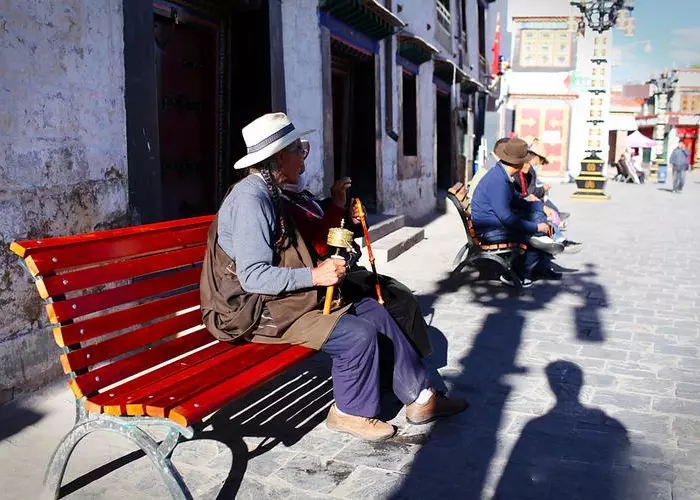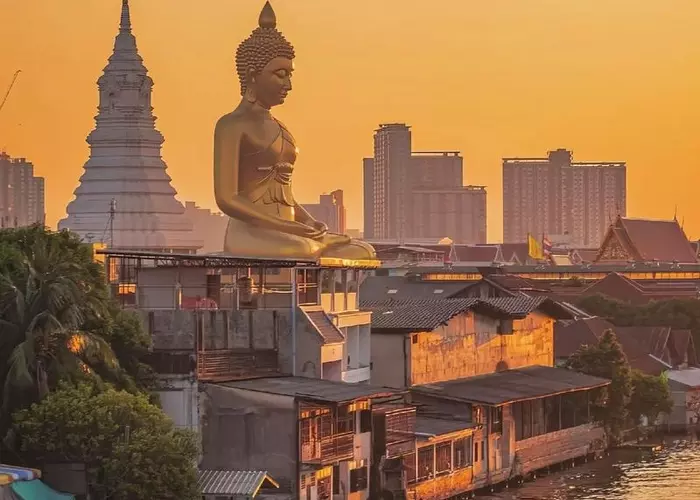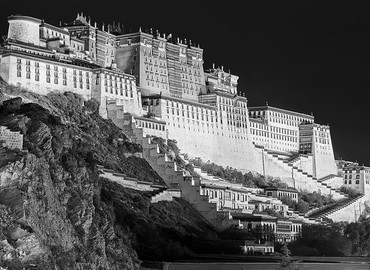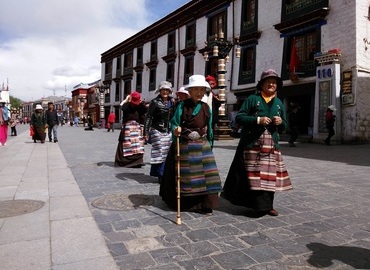Tibetan Nomads
- Cherry
- Last Updated : 05/19/2025
Tibetan Nomads are one of the ethnicities who prefer the nomadic lifestyle. They have no fixed residence for long and choose places with adequate grass and water. Here's a fact Tibetan nomads are not only living in Tibet Autonomous Region but also in other provinces including Yunnan, Sichuan, Qinghai, and Gansu. The total area is twice as Tibet Autonomous Region.
All Tibetan Nomads have a lifetime wish - worshiping the Jokhang Temple. They work hard to accumulate their properties. When they worship, they would not hesitate to contribute all their belongings and prostrate all the way to the Jokhang Temple. This process might take several days, tens of days, and some hundreds of days. They kowtow in three steps and mark the ground with their hands. Every time they kowtow, they would start from their previous marks. Then begin again and keep doing the same thing. When encountering rivers along the way, they would kowtow enough width of the river then wade or ferry it, till Jokhang Temple, Lhasa finally. You will be deeply impressed. Here we will show you more about Tibetan nomads.

Content Preview
Extreme Environment of Tibet
The Tibetan nomads are different from other nomads of the known world. Since they are living in a very high-altitude place (4,500m on average) with inhospitable weather, they become distinctly different. First, their physiological makeup becomes highly adapted to the limited supply of oxygen and to extremely cold weather that is mostly below zero degrees Celsius on average. The weather in Tibet is likewise characterized by intermittent natural weather phenomena like extreme hail storms, heavy snowfall, and landslides.
Faced with these weather extremes, the Tibetan nomads have become very resilient and sturdy. Moreover, they have also found a way to survive in extreme adversities. At a young age, the young ones of the Tibetan nomads have already acquired great adeptness in foreseeing the extreme weather patterns of their land.
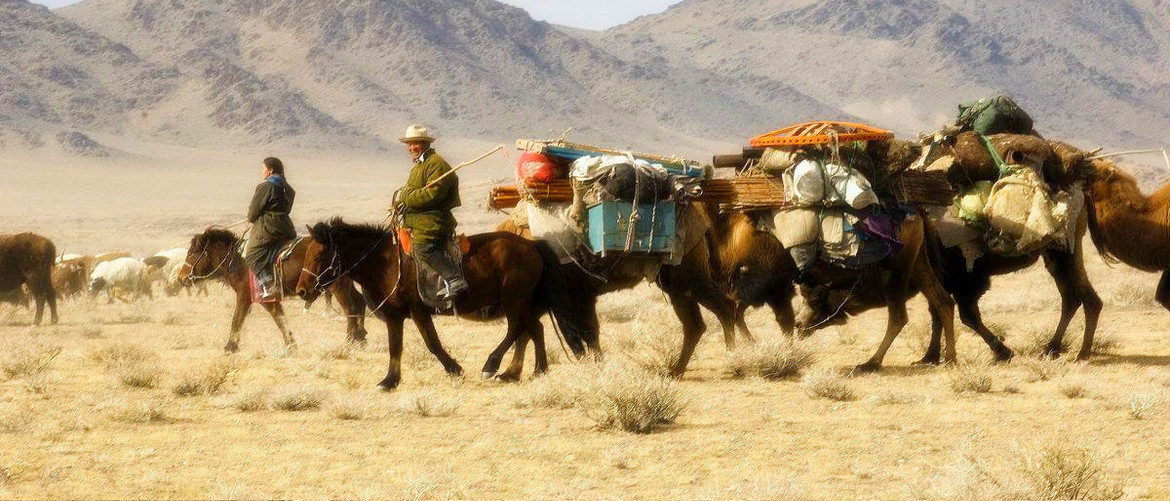
The Lifestyle of the Tibetan Nomads
Tibetan nomads have been able to develop a harmonious relationship with their environment. Moreover, their lives revolve around their closely-knit families. Both mothers and fathers work hard to eke out a living for their families. They mostly rely heavily on pastoralism as a source of livelihood and they have to make good of the limited resources that they have.
One of the most useful animals to the Tibetan nomads is the yak and it plays a critical role in their lives and survival. Although the nomadic males are often engaged in grazing, they also spin yak's wool and hair and create sturdy ropes and slingshots. On the other hand, their women engage in wool weaving to create materials for blankets, tents, bags, and clothing. Their daily chores also include milking the yaks or sheep, making yogurt, butter, and cheese out of yak's milk, grinding barley, fetching and boiling water for household use, collecting fuel for daily consumption out of dried yak’s dung, and keeping their tent cozy and livable for their families, etc. So, Tibetan women are very hardworking and versatile.
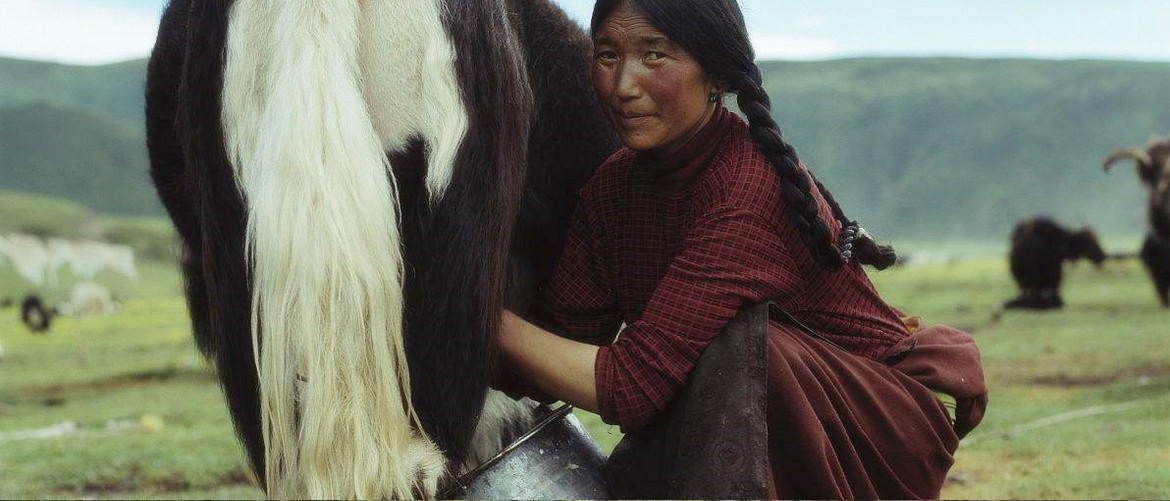
The kids also have their share of responsibilities in the household. They are trained to herd and sometimes they go with their fathers to look after their livestock. They are also tasked to purchase hay for the livestock and salt for household usage. Moreover, they are trained early in their years to become traders.
Another indispensable part of the Tibetan family is the Tibetan Nomad Mastiff. This dog breed provides great loyalty to their owners. With the Tibetan Mastiff’s uncanny ability to remember each of the hundred yaks in the herd, it provides an invaluable service to its master. It also serves as the protector of the family and defender from dangers posed by wild animals.
Experiencing a Tibetan Nomad Tent
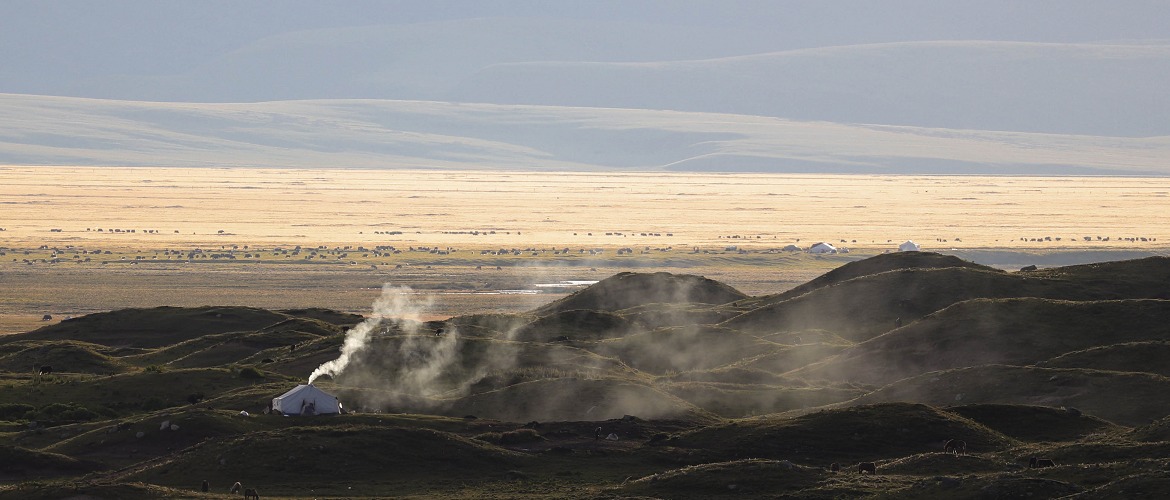
If ever you get a chance to visit a typical Tibetan nomad's tent, you will surely see the following things inside it:
- a stove at the center of the household
- small Buddhist altar, butter candles
- some pictures
- and the small pile of the dried dung of yak
It seldom happens that a tourist gets the chance to enter the household of a nomad in Tibet. Yet, given a chance, it would be good for you to observe some simple etiquette when visiting a nomad’s tent. You should, for example, not touch or point to their Buddhist altar or ornaments casually. Moreover, you should never point your feet towards their stoves for they consider their stoves as sacred. Your host will also keep on refilling your cup of barley wine once you have consumed the wine in your cup. Be courteous enough to tell your host that you had enough.
Encountering Tibetan Nomads While on Tour
Since Tibet is a veritable tourist destination, many tourists usually long to experience and learn more about the actual life of the Tibetan nomads. During the nomadic season (from April to early October), you may encounter (as a tourist) some nomads along the way, especially if you are trekking between Tsurphu Monastery to Yangpachen, Ganden Monastery to Samye Monastery, or along the beach of Lake Manasarovar.
Although Tibetan nomads usually stay in the northern parts of the Tanggula Mountains during the months of February to March, they usually migrate south to graze their herds at the lush southern pastures, wherein they would spend the rest of summer. During this time, their female herds would give birth. Because of these newborns, the movement of the nomadic caravan slows down, and the caravans usually stay longer in one place. They would then slowly move towards the north in the month of August.
Nomads rely heavily on signs of nature when deciding to move from one place to another. They would usually refer to the wisdom of a lama to decide on the auspicious date to migrate. They also look for signs and offer sacrifices to their gods for a safe journey. Moreover, they rely on their horses and yaks for smooth movement. Once they decide to camp, they usually take three hours to set up their tents. As said earlier, they are good at reading the signs of time, and their migration is prodded by the changing weather conditions and the amount of grazing pasture.
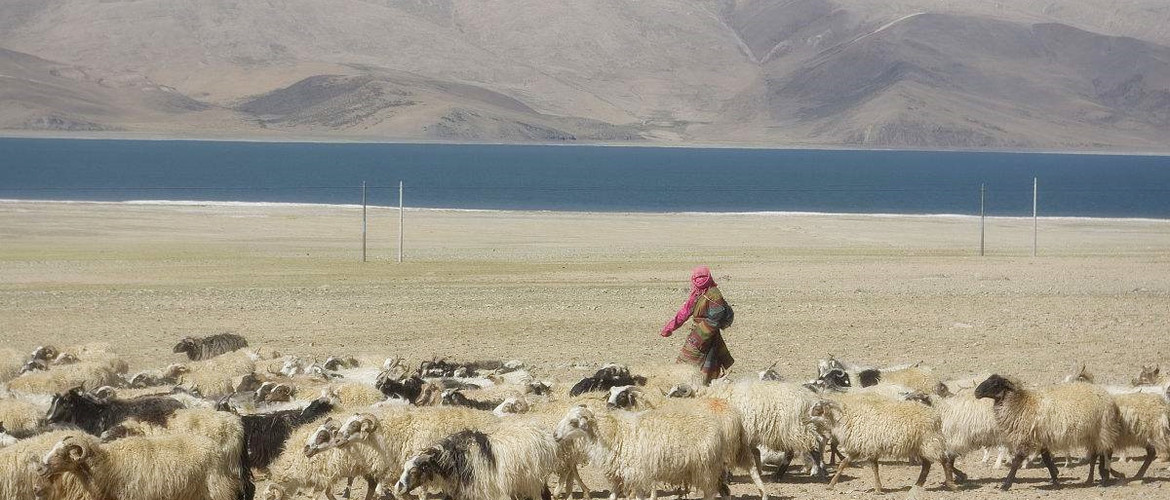
Opportunities in Tourism
Tourists are drawn by the prairies and the unique lifestyles of the Tibetan nomads. They are curious about these nomads and they want to know more about their nomadic life. They also want to take souvenir photos of the nomads and their tents.
Some nomads, however, see opportunities in these situations and offer those curious tourists some cozy accommodations and local delicacies. They also let these tourists experience horseback riding and other outdoor activities. Some prairie lands — where nomads flourish like those of Hongyuan Prairie of the Sichuan Province and Gannan Prairie of the Qinghai Province — have become tourist destinations that showcase the lifestyles of nomads.
Six Famous Tibetan Prairies to Visit
Tibet is replete with prairies, and there are around six popular Tibetan prairies that are worth visiting by a tourist. These six prairies are the following:
Gannan Prairie
Situated in the northeastern part of the Tibetan Plateau, this prairie covers four prefectures, namely: Hesuo, Xiahe, Luqu, and Maqu. This prairie has extremely cold and humid weather with an average altitude of 3,500m. Gannan prairie is mysterious and a bit backward and is considered to be a virgin land. Its great alpine wetland sceneries, monasteries, and unique Gannan customs make this prairie a great place to visit. Moreover, the Luqu, Xiahe, and Maqu pastures are open for tourist exploration. Tourists likewise can visit the monasteries that dot this awesome place.
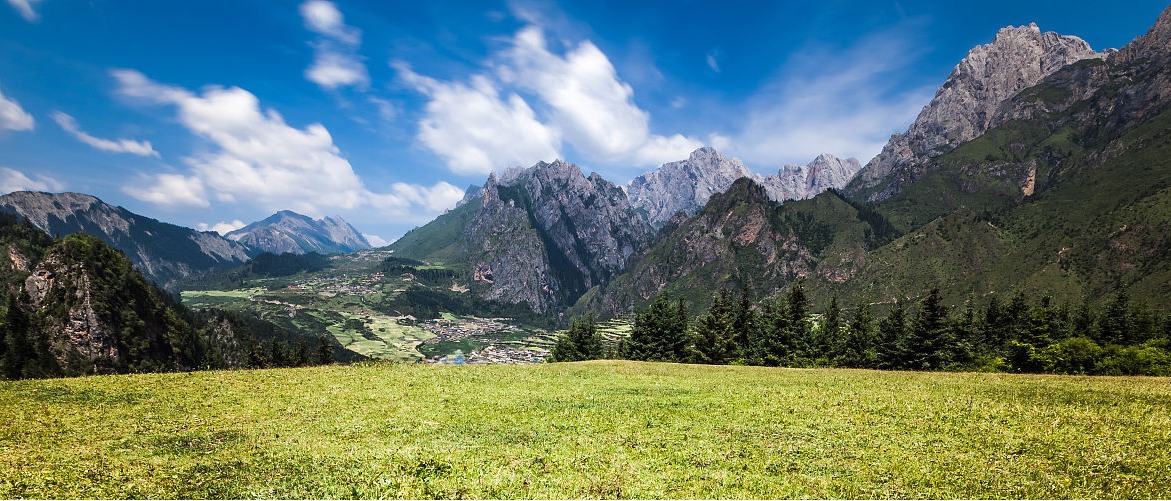
Zoige Prairie
This prairie land is located along with the areas of Sichuan, Ganshu, and Qinghai provinces. It covers an area of around 35,600 square kilometers. It is characterized by meadow steppe and swamps. Pastoral nomads occupy parts of this prairie landscape. The Yellow River also slithers along this prairie, carving its path along the way. The Zoige Prairie is also characterized by hot springs, primeval forests, ancient Panzhou Ruins, and the Namo Grand Canyon.
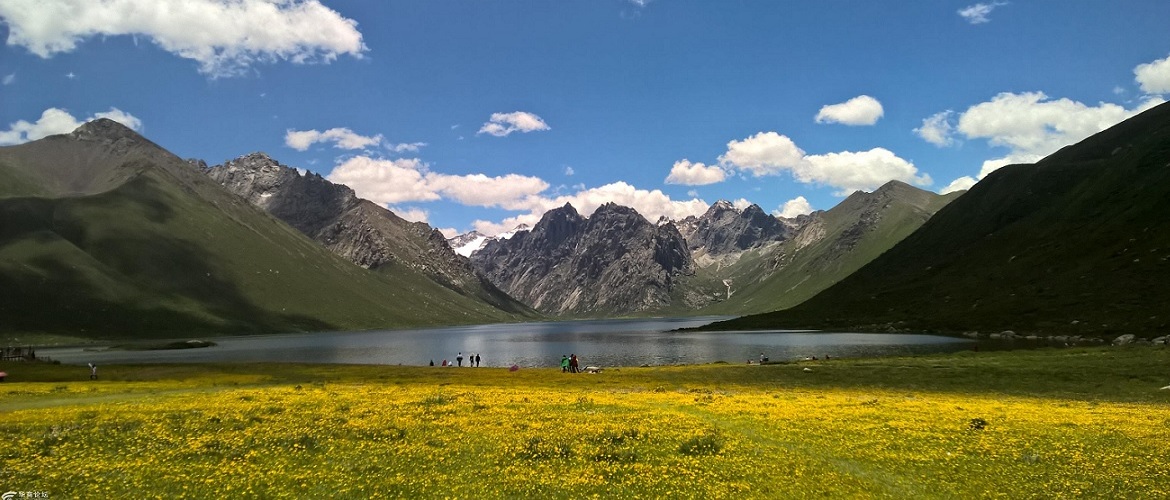
The Qiangtang Prairie holds some of the best pastures in the northern Tibetan Plateau. It lies at the Nagqu Prefecture with an average altitude of around 5,000m. The landscape of the Qiangtang prairie is characterized by highland lakes and exquisite grazing pastures. It also nurtures myriads of wildlife like the Tibetan antelopes, wild yaks, wild donkeys, black-necked cranes, alpine rabbits, and many more. For many generations, Tibetan nomads relied heavily on this prairie land for their livelihood. You'll also see the ruins of the ancient Zhang Zhung Kingdom and other impressive ancient rock paintings. It is best to visit Qiangtang prairie during August so that you can witness some of the grand festivals of the land like the Nagqu Horse Racing Festival.
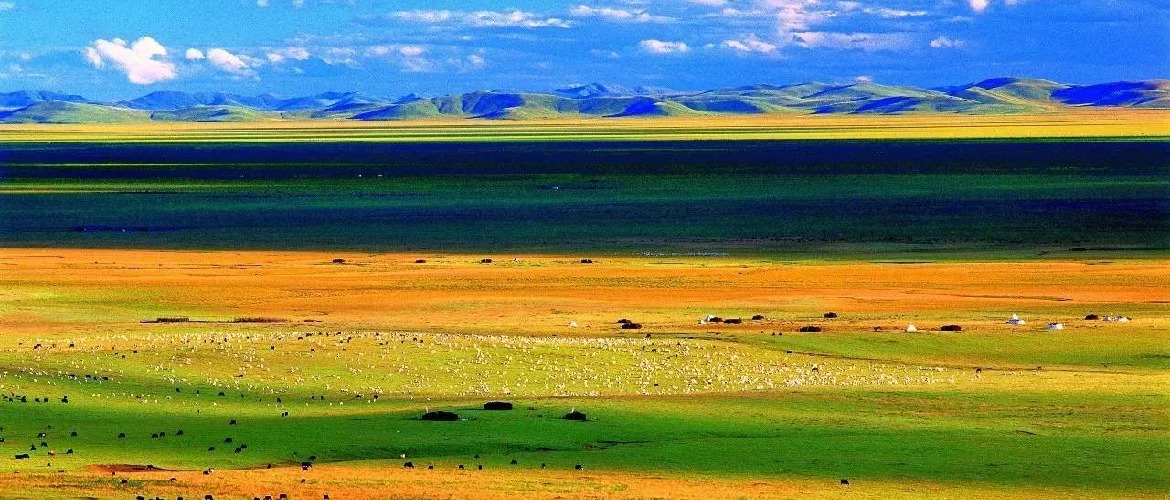
Jinying Prairie
The Jinying Prairie is considered a 4A-level tourist attraction, 5A being the highest level. It is located in Haiyan County in Qinghai Province. The beauty of Jinying Prairie has inspired artists like Wang Luobin — a respected Chinese songwriter and researcher on ethnic music. There are around 300,000 livestock grazing in this rich prairie. The best time to visit Jinying prairie is from July to September.
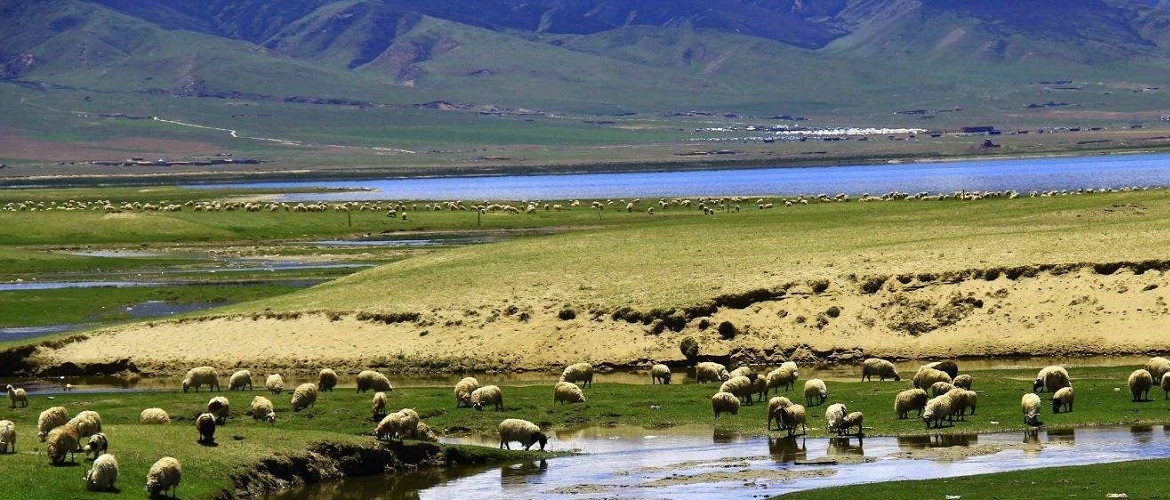
Sankoh Prairie
The Sankoh prairie is located in the Xiahe region of Gansu province. Sankoh prairie is a meadow grassland with an average elevation of over 3,000 meters and spans an area of 70 square kilometers. The Sankoh prairie functions as a major livestock products supplier in the Gannan Tibetan Autonomous Prefecture. Only around 4,000 herders inhabit the area.
Once you visit the place, you can't miss Labrang Monastery, which is one of the six monasteries of the Gelug School of Tibetan Buddhism (Yellow Sect). It used to be the political, religious and cultural center of Tibetans in the adjacent areas of Gansu, Qinghai and Sichuan. The popular festival here is the Xianglang Festival celebrated around Lunar June 15th. You can also enjoy various recreational activities like horse riding and racing, camping, shooting competitions, and other outdoor activities.
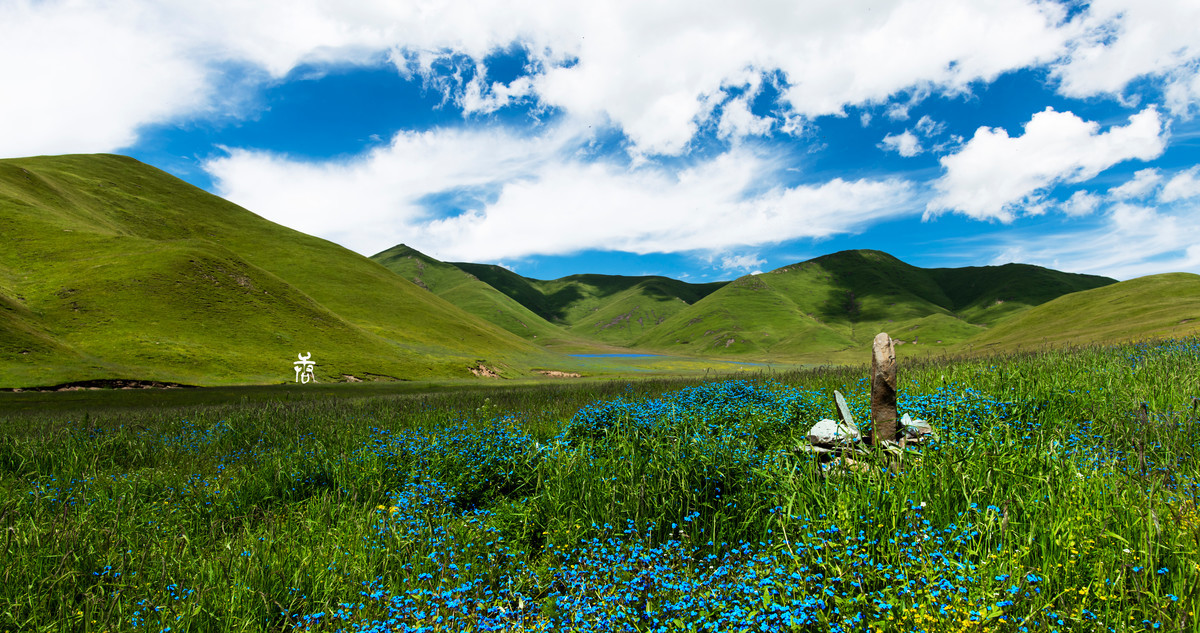
Ngari (Ali) Prairie
Ngari Prairie is situated in the northeast part of the Ngari Prefecture. This prairie appears to be a boundless tract of grassland and wilderness that exists side by side with glaciers, mountain ranges, and alpine lakes. The view of this prairie is spectacular, and you may be able to see an amazing mirage during noontime when hot air emerges on the horizon.
This prairie serves as a sanctuary for various wild animals, and you can expect to see rare species of birds and mammals such as wild bears, Himalayan blue sheep, wild donkeys, wild yak, lynx, black-necked cranes, and many more. You can visit the Ngari prairie in November and December if you want to see the amazing migration of the Tibetan antelopes.
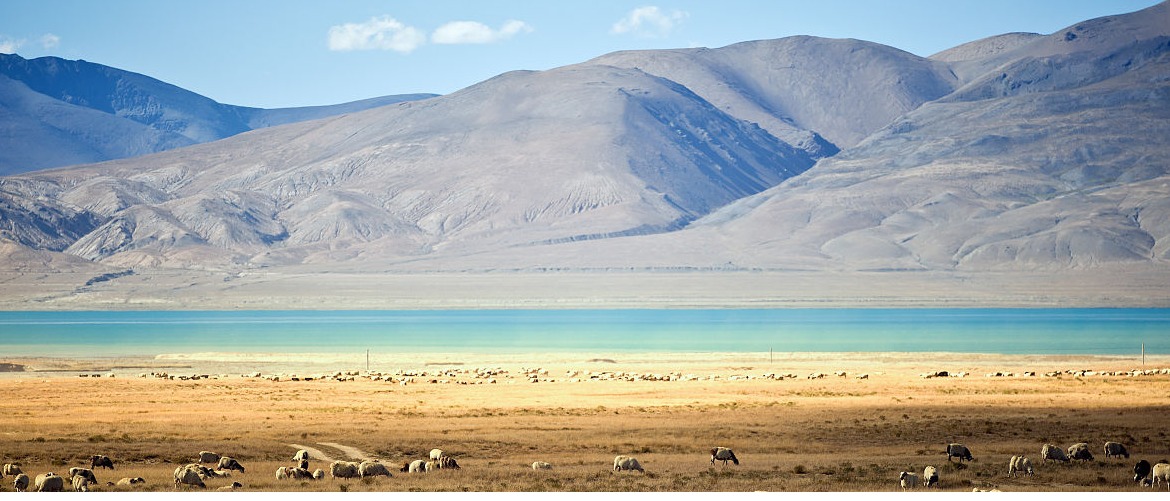
Popular Nomadic Festivals
The Tibetan nomadic people are some of the best horsemen in the world. Each year, as they move from one place to another, they hold horse racing competitions involving horses of various heights and sizes. They usually hold these festivals in the prairies, and the most popular horse racing festivals among those include the Litang Horse Racing Festival of the Sichuan Province, the Yushu Horse Racing Festival of the Qinghai Province, and the Horse Racing Festival held in northern Tibet.
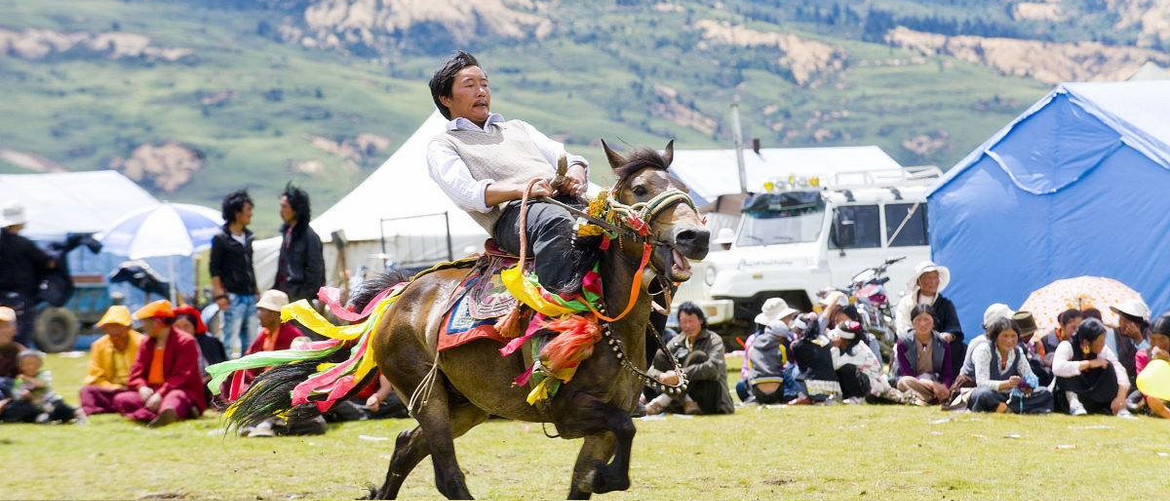
Horseracing, in fact, is a staple attraction of these prairie festivals, and the Tibetan nomads use these festivals to showcase their bravery and tenacity, as well as their great horseback riding skills. These festivals usually last for three days and include games of horse riding, archery, tug-of-war, stone-carrying competitions, and many more. The day would usually end with a campfire and the roasting of a lamb, while people dance and sing around the bonfire. Lastly, these festivals provide opportunities for setting up trade fairs, wherein tribesmen can sell their products like yak butter, dried beef, salt, medicines, cordyceps, etc.
Conclusion
Tibetan nomads embody a unique way of life shaped by resilience, deep spirituality, and harmony with nature. Living in some of the world’s highest and most challenging terrains, they have adapted to harsh conditions while preserving rich traditions — from their sacred pilgrimages to Jokhang Temple to their vibrant festivals and daily pastoral routines. For travelers, encountering Tibetan nomads offers an authentic glimpse into a timeless culture and a chance to appreciate the enduring strength and spirit of Tibet’s people.
Email response within 0.5~24 hours.


